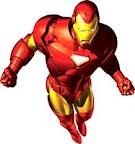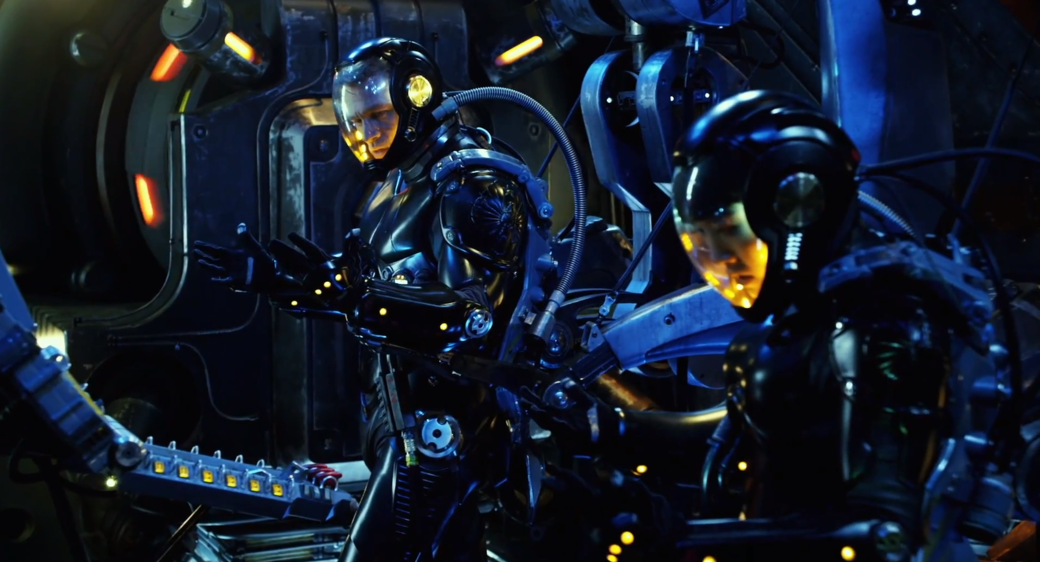
Putting the “Science” in “Science Fiction” – Iron Man
Superheroes have fascinated us for a long time, to the extent that some people have been inspired to emulate them in the real world, but the type of superpowers that are portrayed in movies and comic books are far beyond the realm of possibility. Many superheroes have powers that are impossible to acquire in reality, and many are even impossible to explain scientifically. It is perhaps for this reason that the “gadget” or “tech” hero has become such a popular archetype, as these characters are ordinary human beings who rely on fantastical technology in order to gain their powers. Tony Stark, also known as Iron Man, is a perfect example of this type of hero, and with the recent release of The Avengers, he has become one of the most popular heroes today.
The source of Tony Stark’s powers is the Iron Man armour, a sophisticated powered suit that contains flight systems, strength-enhancing hydraulics, weapons, and enough armour to protect the man inside. It is a formidable system far beyond current technology – or is it? Scientists and engineers have been working on suits like Iron Man’s, often known as powered armour or powered exoskeletons, for years and are now coming close to producing the first generation of finished products.

One of the main supporters of exoskeleton research is the U.S. Army, which has contracts with companies like Raytheon to design and build powered suits for military use. The plan is to eventually integrate most of the equipment a soldier carries, such as radios, masks to protect from chemicals and toxins, sensor systems, and body armour, into a suit that will keep him safe and in communication with his comrades on the battlefield. Besides integrating current equipment these suits will increase a soldier’s strength and endurance by mechanically assisting his movements, and will allow troops to operate longer in the field with less fatigue while carrying heavier loads and weapons. Although these combat suits are an impressive idea the products are still far from completion, but the United States military has other designs that should be ready for production sooner. Currently the main emphasis in military exoskeleton design is creating machines to assist in logistics roles. The improved strength and endurance that a powered exoskeleton can provide make it ideal for assisting soldiers in lifting heavy loads while unloading trucks, re-arming airplanes, or conducting other military duties. A soldier wearing an exoskeleton will be more efficient than one who is without a suit and will be able to move heavier loads more quickly without becoming fatigued. Another advantage of the exoskeleton is that it protects the soldier from injuries like muscle sprains, joint stress, and back pain because the suit does most of the lifting. This may seem like a mundane use for a piece of highly advanced equipment, but this first generation of exoskeletons, like the Raytheon Sarcos XOS 2, Lockheed Martin HULC Exoskeleton, and the Berkeley Lower Extremity Exoskeleton, will provide much needed assistance to military men and women, as well as being stepping stones towards the power armour that will protect tomorrow’s soldiers.
There are obvious military applications to exoskeleton technology, but the military is not the only group promoting research into such devices. The same attributes that make exoskeletons appealing to aid soldiers in logistics duties would also make them useful in civilian workplaces like construction sites and warehouses. Once exoskeletons are ready for mass production they will likely begin to replace other types of heavy lifting equipment, such as forklifts, and will allow workers who must work with heavy loads to work more efficiently and with increased speed and safety.

A surprising area where exoskeleton technology is being explored is the medical field. Research is currently being undertaken to create exoskeletons for use in hospitals. Some of these designs will have similar construction to those already developed for heavy lifting and are intended to help nurses move patients and gurneys quickly and easily without fatigue or injury. The mechanical strength and precision of these exoskeletons will be very valuable when it comes to moving injured patients, as it will help to ensure a gentle ride that will not aggravate injuries. Although lifting heavy objects will be useful around hospitals an even more fascinating area of research revolves around the use of exoskeletons for those who have damaged limbs. Researchers believe that these devices will be very useful in physiotherapy, allowing people to exercise the muscles in their limbs in a safe manner, as well as reducing the number of physiotherapists required per person. Some even more ambitious scientists believe advanced enough exoskeletons could be used to provide locomotion to disabled limbs, allowing paraplegics to walk and quadriplegics to use their arms and legs again. The Cyberdine HAL is one of the first exoskeletons designed with the medical field in mind, and if it succeeds there will likely be more in the near future.
Although we are still some time away from running around in our own personal Iron Man suit, research into the technology behind powered exoskeletons is ongoing and advances are still being made. One of the main limitations holding back mass production of exoskeletons is the issue of a portable power supply. Most current models like the Sarcos XOS 2 are powered by large hydraulic cables that limit their mobility, and even exoskeletons like the HAL that carry their own power supply cannot operate for extended periods without recharging. By making exoskeletons more efficient and producing more effective portable power supplies, researchers hope to soon overcome this issue and begin mass production of exoskeletons. We may have to wait a while longer before we can buy our own powered suit, but in the meantime we can watch them on the silver screen, read about them in science fiction, and dream of the possibilities the future of this technology holds.









